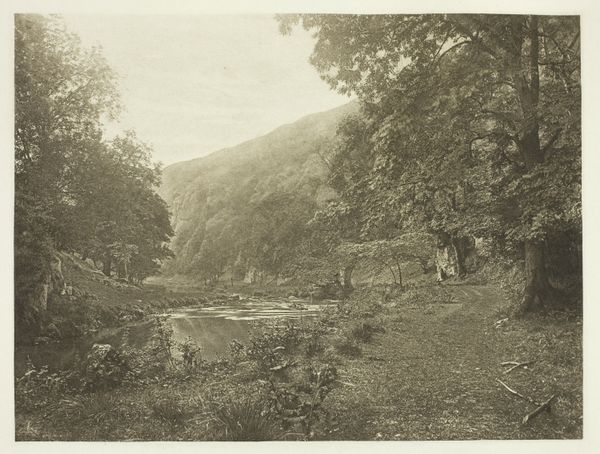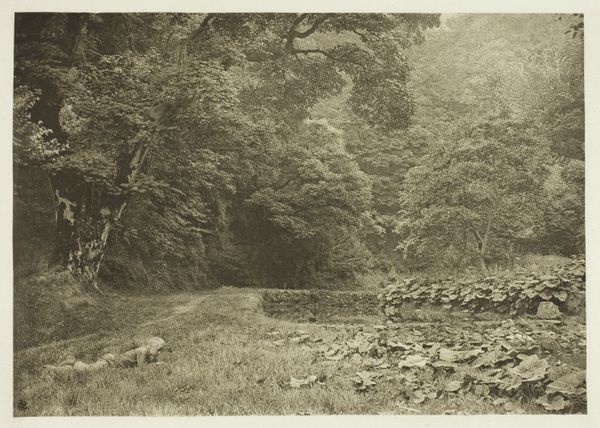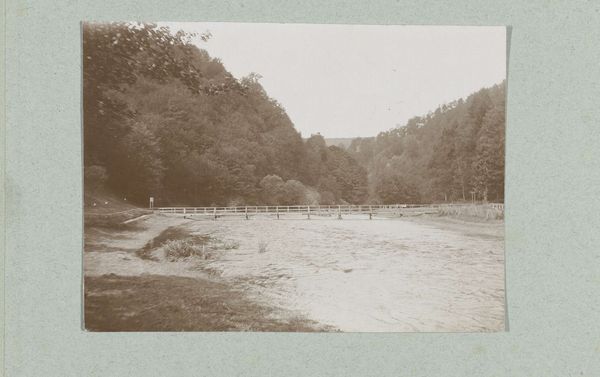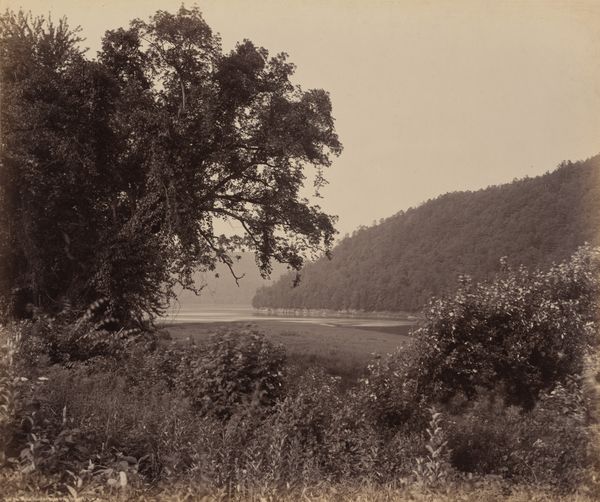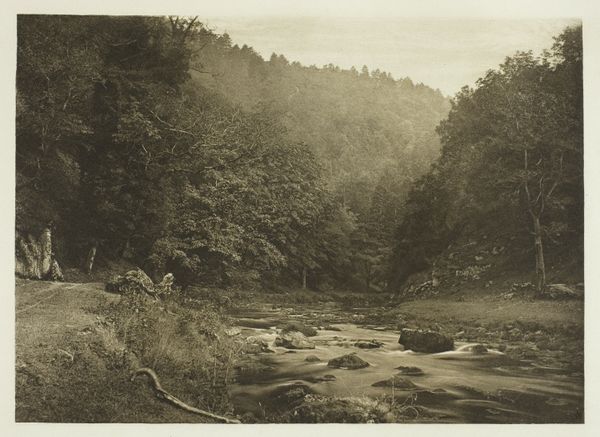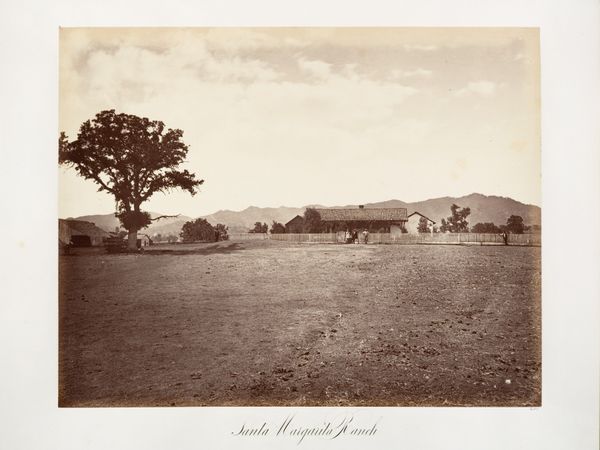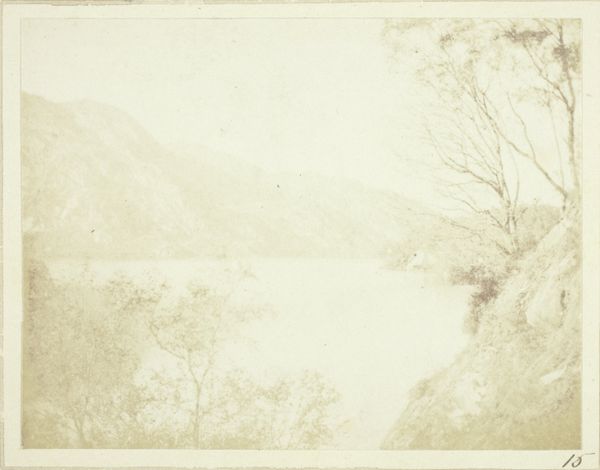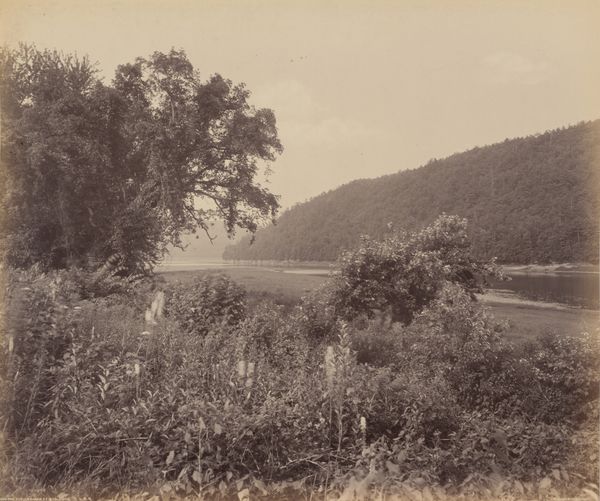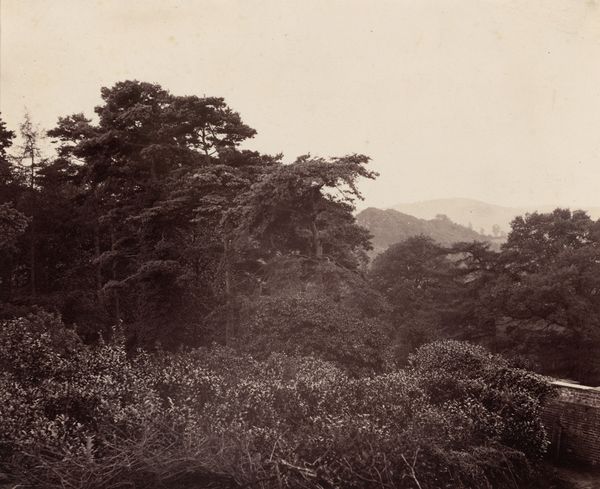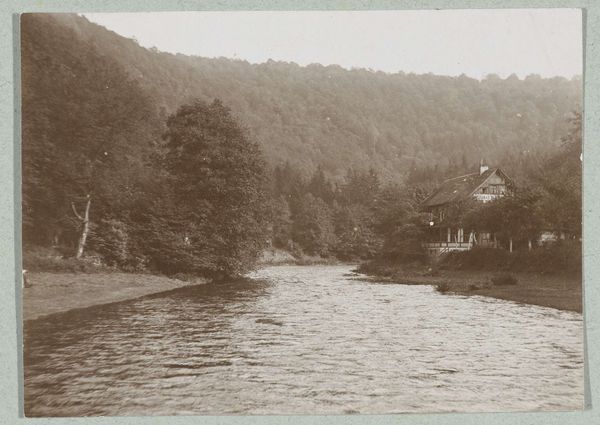
Dimensions: 16.5 × 20.9 cm (image/paper); 29.4 × 37.3 cm (mount)
Copyright: Public Domain
Curator: Roger Fenton, a leading British photographer, likely captured this scene of the Ribble in Yorkshire sometime between 1860 and 1870. What’s your immediate reaction to it? Editor: The monochrome gives it a beautifully somber, almost haunting, atmosphere. The subdued gradations create a tonal unity where it’s hard to distinguish land, water, and sky. Curator: The hazy effect is central to understanding Fenton's work. It relates directly to pictorialism where photographers manipulate the image to create an artistic effect, often mimicking paintings, which challenged the definition and perceived value of this emerging medium. Editor: And that relates to material considerations: using gelatin silver print allows for this hazy aesthetic. Beyond that, thinking about the workers who prepared the materials, collected the silver…it shows the labour intensivity behind photography in its early days, blurring the lines between technology, craft and labour. Curator: Quite true. Pictorialism, which many argue is central to Fenton's vision, prioritized artistry over pure documentation. You see a conscious arrangement of the elements; consider how the river leads your eye, or the contrast that punctuates the composition. It is as much about how we are looking at this subject, as it is a photograph depicting a landscape. Editor: The location then adds further context to this. Yorkshire with its industrial history contrasts the Romantic aesthetic of the sublime experience in nature. A rural idyll brought into dialogue with working realities. Curator: Indeed. The visual tension certainly speaks volumes. It demonstrates that formal elements and the materials they employ are deeply intertwined, both shaped by the context in which this was created and conceived. Editor: Yes, understanding production and social factors alongside compositional decisions gets us much closer to the image as a cultural artefact and as art.
Comments
No comments
Be the first to comment and join the conversation on the ultimate creative platform.
